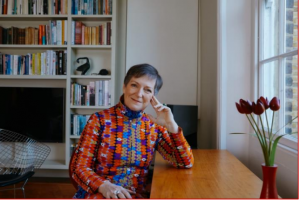Photography by Deleece Cook on Unsplash
The data is beginning to tell its own story. Divorce overall has been falling for decades, at least among the educated. But one exception is the increased rate of divorce among people over age 50. It’s doubled since 1990 and is predicted to triple by 2030. There are enough of these divorces now that they’ve been given a variety of more or less colourful names depending on your degree of optimism about the result: ‘grey divorce’ for some, ‘silver splicers’ for others.
I’m one of those who quit at 50, after a solid 22-year run. Contrary to the popular mythology of male midlife crises, it’s mostly women walking out the door. I wrote a book exploring the phenomenon and its aftermath, called Late Love: Mating in Maturity. It was, by far, the hardest thing I’ve ever done. Looking back a dozen years on, it was also the wisest.
Longevity is part of the push behind the splits. As the children leave, the empty nest beckons, as does the prospect of retirement (or redundancy). This often means one or both of you are hanging around a newly empty house, and you return to the twosome of decades ago, but older (and sometimes wiser). For some, this is a joyful return to an earlier state of amorous freedom, deepened by the wise harvesting of a life and love well-lived. For others, it’s impossible to imagine another 30 or 40 years with the person they are contemplating on the other side of the kitchen table. In all cases, it’s marriage renegotiation time.
Balancing the personal and professional sides takes conscious management of our 100-year-lives.
I specialise in ‘longevity leadership’ at work – the ability to strategically integrate this new longevity by understanding its consequences on careers and customers, companies and countries. But the same leadership is required at home. Successful, lengthy marriages require many of the same muscles that support successful, 60-year careers: self-awareness, skill and the curiosity to re-invent, regularly. They are flip sides of the same coin – your life.
Balancing the personal and professional sides takes conscious management of our 100-year-lives’ emerging four quarters. They are deeply inter-connected. Invest too much in one side for too long and you lose the other – or yourself. Here’s a little road map to each of the 4 Quarters and what they may mean for love.
In Q1, we often discover love, or at least search for it. We are often heavily influenced by our parents’ relationship and can either seek to emulate or reject their model. As in work, we spend Q1 exploring love and friendship in all its forms. In Q2, the majority of us will settle into a committed relationship, in the same way many of us will settle into some form of work. Psychologists say we usually marry some version of our parents, imprinted as we are by traits of which we are largely unconscious. But there are many influences in our marriage choices – our cultures, our families, our friends. More than we know, we are extrinsically motivated, seeking to achieve what the world has told us success and love looks like. (Our cultural scripts have often meant that many men have invested too much at work in Q2 and too little in love, and women the contrary.)
“The privilege of a lifetime is to become who we truly are, ”Jung.
That is where our longer lives start to disrupt a pretty predictable and historical pattern. Our longer lives, and the 20th century’s gift of an extra three decades of life expectancy, have led to the emergence of a whole new phase, what I call the 3rd Quarter, roughly the years from 50 to 75. This newly healthy, active and engaged quarter-century is impacting our couples in unprecedented ways. In the second half of life, as we pass our 50th birthdays, humans begin to feel the insistent call of more intrinsic voices. We care less about what others think and learn that what the world calls ‘success’ or ‘failure’ may not align with our own hearts and values. We yearn to align with our own selves, dreams and ambitions. This is why I call this Quarter ‘becoming,’ inspired by Jung who wrote that “the privilege of a lifetime is to become who we truly are.”
If you are lucky, your partner is on the same path. And interested in sharing the journey. This then becomes a time of defining a new, shared vision for the second half of life. It can include flipping professional roles and tempos, supporting parents and children in dramatically different ways, and sometimes creating new ventures together. For others, they will realise that the person they married has evolved along a bifurcating road, taken a turn that makes them feel increasingly like a stranger to the future you yourself are dreaming of. And because there are likely decades ahead, it’s best to acknowledge the split and find new partners for the rest of the road.
In Q4, new challenges and opportunities arise for couples. It’s a time of harvesting the decades you’ve spent together, the families and legacies you’ve built, the memories you share. Satisfaction in Q4 depends almost entirely on what you feel you’ve accomplished (or not) in the prior Quarters and whether you have come to terms with where you are. It’s also a time of physical and sometimes cognitive decline. Mutual support becomes less about parenting and professions, more about care and health. Because most women marry men a few years older than them, the care burden more often falls on their shoulders. The most daunting statistic I know is that 80% of men die married, while 80% of women die alone. There is often a long after-life to marriages that few couples (and even fewer women) spend much time planning for. They should. The average UK gender pension gap is a harrowing 35%. Love is a wonderful thing – until you lose it.
Photography by SK on Unsplash
Long marriages, however, are not always a sign of success. The fundamental question for any partnership is whether you are staying in yours because of love – or fear. The combination of life extension, social acceptance of divorce, and women’s economic empowerment means there is a bit more freedom and flexibility in a marital system designed in another era – when property and procreation were at its heart. Now the demands of the heart and the Q3 yearning for self-expression have trumped the old patriarchy’s priorities. Coupledom has been invested with expansive expectations of love and growth and meaning. And the institution of marriage is creakily adapting. Just like the workplace.
You need to be curious enough about the human sharing your house to engage in a careful conversation.
Longevity requires flexibility. Just as you must spend a growing number of hours investing in your physical resilience and mobility, so I’d suggest the over-50 couple needs to invest … in each other. You need to be curious enough about the human sharing your house to engage in a careful conversation. What are the dreams and expectations for this new phase of life? Are we going to keep doing what we have been, or are we yearning for change and new horizons – geographic, spiritual or intellectual? Do we share goals and values or have we become two rather dissenting adults who feel unseen and unheard by their mates? Will we unite our efforts and re-invent together into a mature post-procreation couple? Or will we jump at the opportunity to be finally free of the expectations and obligations of family and society and make a jump at becoming ourselves?
Midlife is a time of multiplying transitions. They tend to pile up on each other in unexpected and shocking ways. Children leave, parents age and die (sometimes friends too), professions change, technologies plunge ahead, bodies sag backward, and the world moves on, uncaring. Change is constant, transition is our capacity to adapt to it. Each transition requires choices which, cumulating, slowly reveal us to ourselves. In Q3, the time comes to let go of many of the things that seemed essential in Q2. We often discover that they were holding us back.
Photography by Tom Mosholder
Good partnerships are based on mutual support and self-enhancement. If you wake up in Q3 to a partner who is curiously asking you about your dreams for the second half of life and how they can help you move and grow into your next chapter, celebrate. If you feel that your partner is, instead, an obstacle on your path, your choice becomes heart-breakingly simple: you change your partner, or your dreams. The choice is yours.
Just remember, life is long – and lengthening.


 &
& 








